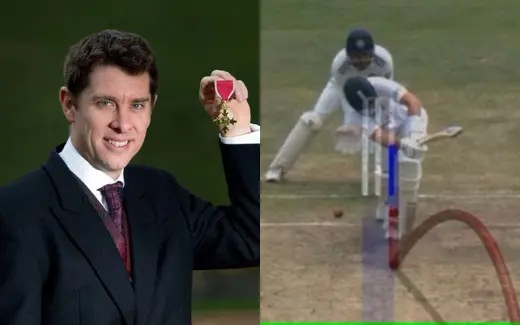

Hawk-Eye founder Paul Hawkins defends DRS decision for Joe Root’s dismissal in Ranchi Test. In the recent India versus England Test match in Ranchi, a contentious LBW decision that dismissed Joe Root in England’s second innings generated a heated debate about ball-tracking technology.
A controversial LBW decision involving Joe Root during the last India vs. England Test match in Ranchi ignited heated debate about the precision and dependability of ball-tracking technology.
The LBW verdict against Root, which reverse after the on-field umpire’s call overturne. Renewed debate about the effectiveness of the verdict Review System (DRS) in cricket matches. However, Hawk-Eye founder Paul Hawkins has defended the ball-tracking technology employed in the Decision Review System (DRS).
“To begin, you measure the width of the stumps on each day of the Test. That then becomes the distinction between what is pitch correctly and what is not. Hawkins told Simon Hughes on the ‘The Analyst’ podcast that it was a very close call (with Joe Root).
Also Visit: BCCI announces central contracts for 2023-24 season; Iyer-Kishan faces the axe.
‘It would have been clearer on TV’ – Paul Hawkins
The incident occurred during England’s second innings, when Indian bowler Ravichandran Ashwin appeared to catch Root LBW. Kumar Dharmasena of India successfully disputed the decision after the on-field umpire gave him a not-out call. The ball-tracking system reveal that the ball had been pitch marginally inside the stump line, resulting in Root’s dismissal for 11 runs.
He underlined the limited margin of error and suggested ways to improve the presentation of tracking data to help viewers understand it.
Hawkins also discuss the main distinction between how Hawk-Eye is employed in tennis and cricket.
“In tennis, you will occasionally get zero mm in or zero mm out (referring to ball pitching outside the line). However, in tennis, it is decide that it is not out until it is 1mm out, rather than 0 mm. So, in tennis, we change the bounce mark purely for presentation purposes, so a zero mm in becomes a one mm in to allow viewers to see the mark,” he explained.
On the Root call, Hawkins stated. “It must be 1mm more in than out (Joe Root case), or we would not have said it’s pitch in line.” But that is a very close call. According to the legislation, we provided the correct answer. But we failed to avoid being the story, and there may be a learning opportunity to better our presentation and other aspects to make those close ones slightly clearer,” he said.
Many, including former England captain Michael Vaughan and quick bowler Steve Harmison. Question whether the ball was pitch in line. The wicket became a major talking topic as England crumbled in the second innings. The English media studied the clip in depth, but Hawkins repeated that the technology made the correct judgment according to the guidelines.
Also Read: BCCI uncertain on KL Rahul’s fitness as batter travels to the United Kingdom for injury assessment
